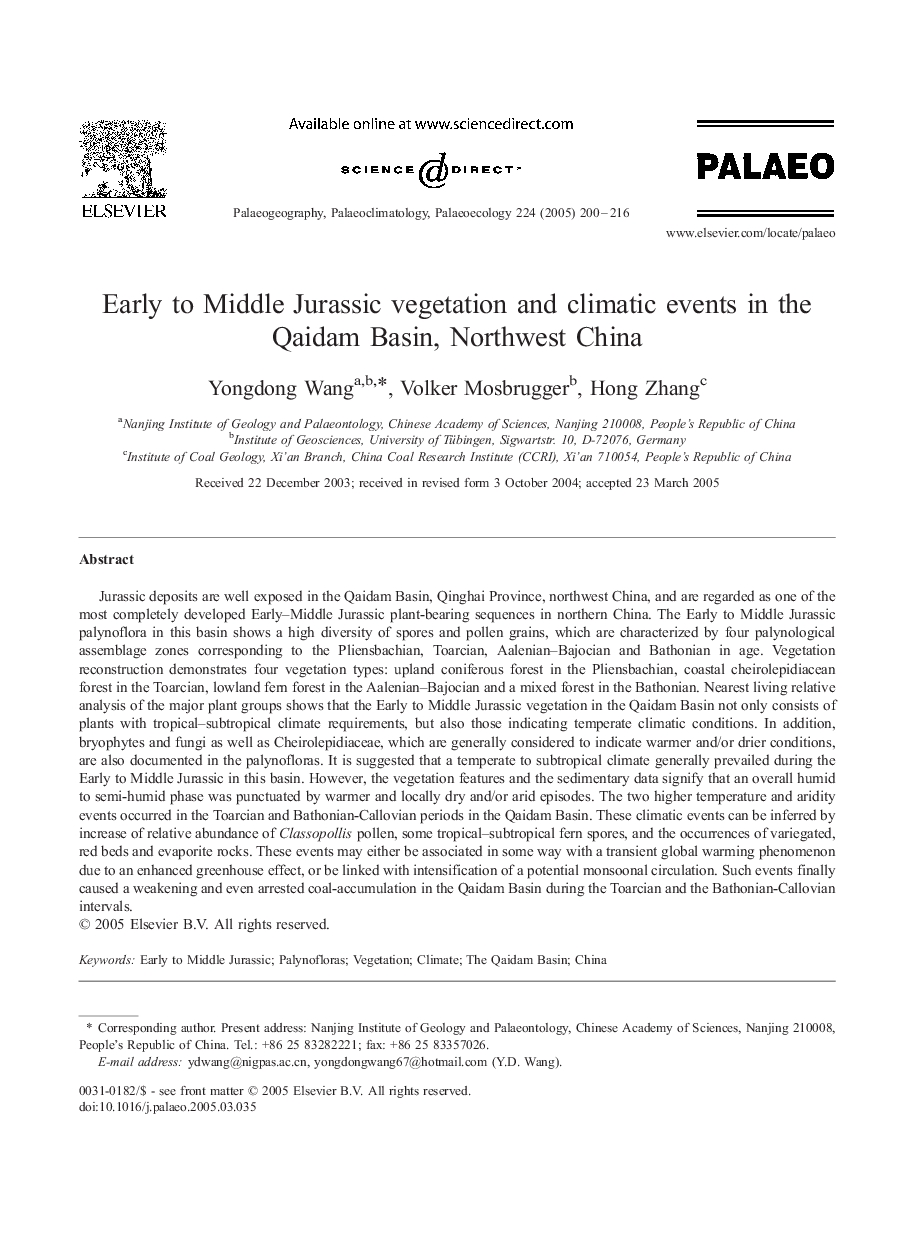| Article ID | Journal | Published Year | Pages | File Type |
|---|---|---|---|---|
| 9463099 | Palaeogeography, Palaeoclimatology, Palaeoecology | 2005 | 17 Pages |
Abstract
Jurassic deposits are well exposed in the Qaidam Basin, Qinghai Province, northwest China, and are regarded as one of the most completely developed Early-Middle Jurassic plant-bearing sequences in northern China. The Early to Middle Jurassic palynoflora in this basin shows a high diversity of spores and pollen grains, which are characterized by four palynological assemblage zones corresponding to the Pliensbachian, Toarcian, Aalenian-Bajocian and Bathonian in age. Vegetation reconstruction demonstrates four vegetation types: upland coniferous forest in the Pliensbachian, coastal cheirolepidiacean forest in the Toarcian, lowland fern forest in the Aalenian-Bajocian and a mixed forest in the Bathonian. Nearest living relative analysis of the major plant groups shows that the Early to Middle Jurassic vegetation in the Qaidam Basin not only consists of plants with tropical-subtropical climate requirements, but also those indicating temperate climatic conditions. In addition, bryophytes and fungi as well as Cheirolepidiaceae, which are generally considered to indicate warmer and/or drier conditions, are also documented in the palynofloras. It is suggested that a temperate to subtropical climate generally prevailed during the Early to Middle Jurassic in this basin. However, the vegetation features and the sedimentary data signify that an overall humid to semi-humid phase was punctuated by warmer and locally dry and/or arid episodes. The two higher temperature and aridity events occurred in the Toarcian and Bathonian-Callovian periods in the Qaidam Basin. These climatic events can be inferred by increase of relative abundance of Classopollis pollen, some tropical-subtropical fern spores, and the occurrences of variegated, red beds and evaporite rocks. These events may either be associated in some way with a transient global warming phenomenon due to an enhanced greenhouse effect, or be linked with intensification of a potential monsoonal circulation. Such events finally caused a weakening and even arrested coal-accumulation in the Qaidam Basin during the Toarcian and the Bathonian-Callovian intervals.
Keywords
Related Topics
Physical Sciences and Engineering
Earth and Planetary Sciences
Earth-Surface Processes
Authors
Yongdong Wang, Volker Mosbrugger, Hong Zhang,
